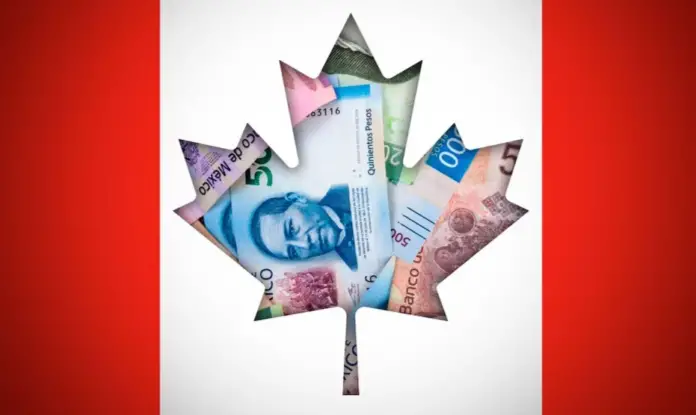The Mexican currency is one of the 10 most traded currencies in the international currency market, the most traded in Latin America and the third in the entire continent. Its cost is of great importance at the national and regional level, since the country is characterized by being one of the main commercial partners of Canada and the United States.
The exchange rate is the value of a currency expressed in terms of the currency of another country, this conversion facilitates the international exchange of goods and services, as well as the transfer of funds between nations. Canada and Mexico maintain an important relationship as a result of the T-MEC trade agreement. For these reasons, below we share with you how much the exchange rate is between the Canadian dollar and the Mexican peso.
The Canadian dollar is paid at the beginning of today at 14.2628 pesos on average. The value of the currency at the close of markets yesterday was 14.2958 pesos.
According to information from Investing, the annual range in the exchange rate of this currency is between 11.9698 – 14.9402 pesos, this represents a variation of 13.74% in said period.
Various factors determine the level of the exchange rate, monetary policies, inflation, trade balance and consumer expectations are some of the issues that influence the value of currencies.
According to official statistics from the last census carried out in Canada, Mexicans are the third population in Latin America and the Caribbean with the greatest presence in its territory and the first among the Spanish-speaking countries in the region. In 2021, a total of 132,220 people originally from Mexico living in that country were counted.
The Canadian government considered that 75.8 percent of that population are permanent inhabitants who obtained Canadian citizenship by naturalization or who were born in Mexico to a Canadian father or mother. 24.2 percent were classified as non-permanent residents, this group includes Mexicans who obtained a work visa or students who are on an exchange.
According to the Government of Mexico, remittances from Canada amounted to 216 million dollars during the first quarter of the current year and in 2023 a total of 930 million dollars were sent.
The economy in Canada
In the foreign exchange market, the supply and demand of currencies will determine the value of the exchange rate. Public policies, as well as monetary policies, have a great influence on the fluctuation of a currency.
The Canadian dollar is the official monetary unit of the North American country and is represented under the acronym CAD in the foreign exchange market. This currency has been used throughout almost the entire history of the country.
Canada has historically been characterized as one of the main trading partners of the United States and, in light of the Mexico, United States and Canada Treaty (T-MEC) approved in 2020, it maintains a great commercial relationship with the national market.
According to the Organization for Economic Cooperation and Development (OECD), the North American country is heading for a period of moderate growth after the “hard blow” represented by the coronavirus pandemic.
In 2021, the country managed to position itself as the main commercial partner of the United States with a 14.5 percent share of that market.
Economic forecasts for this year
Economists expect that Canada’s financial situation will suffer less difficulties as the population manages to overcome the first half of the year. The country’s Central Bank has maintained restrictive economic policies to encourage a slowdown in inflation.
The coronavirus pandemic and the rise in prices recorded in 2021 caused the Central Bank to join forces to try to slow inflation. The country’s economy was driven last year mainly by the historical growth of the population.
Economists expect the Canadian economy to be on track this year to meet the targets set by the central bank and to enter a growth path with strict monetary policies.

Source: infobae




